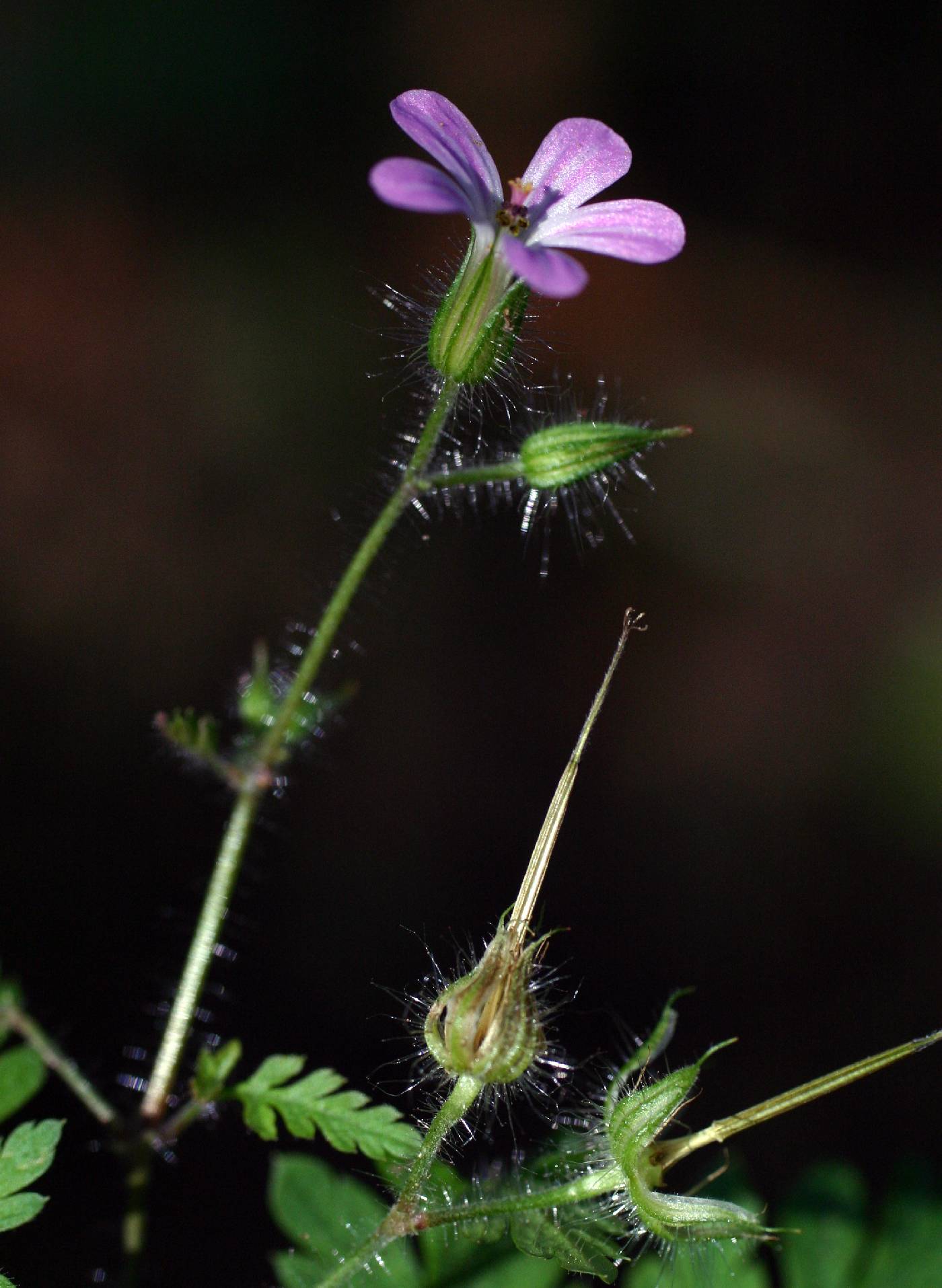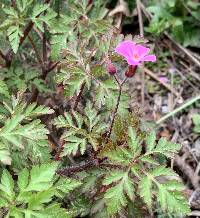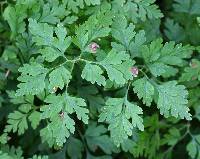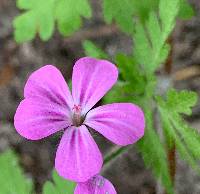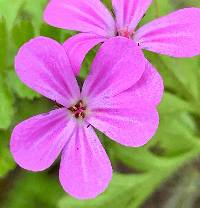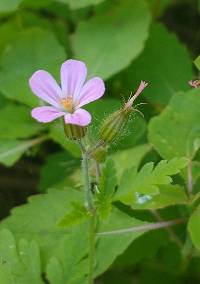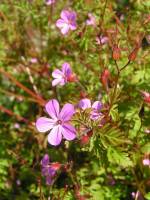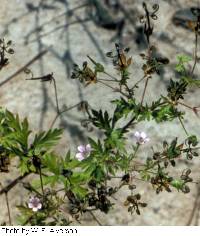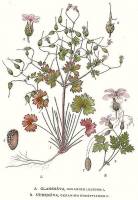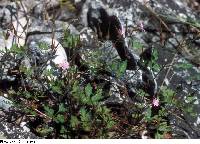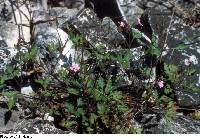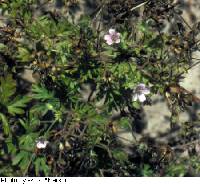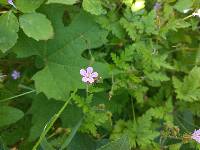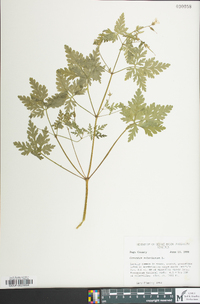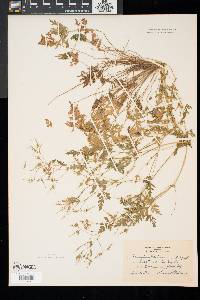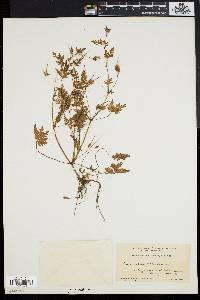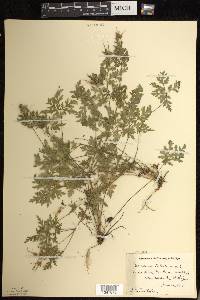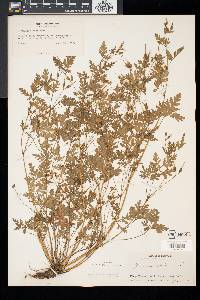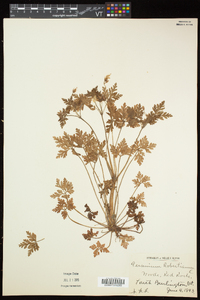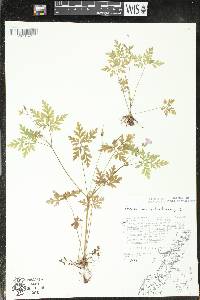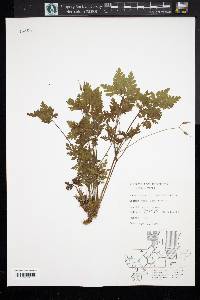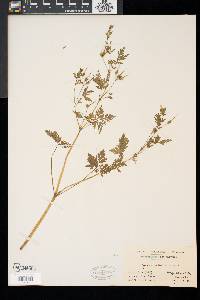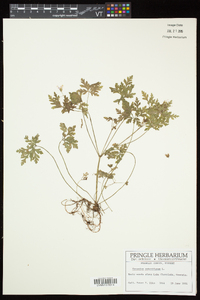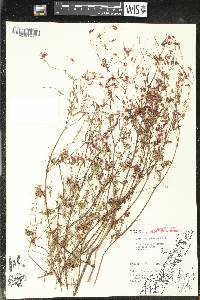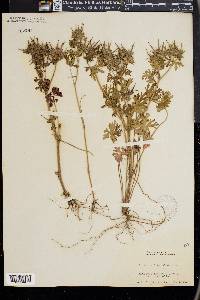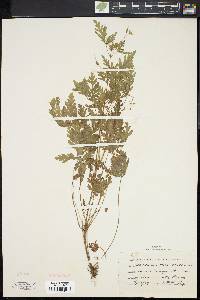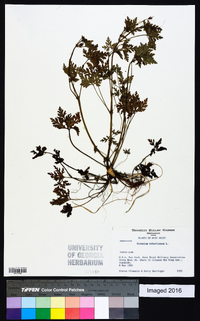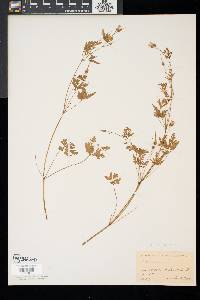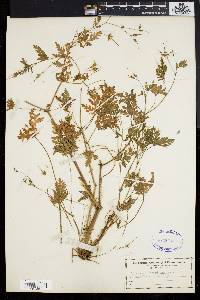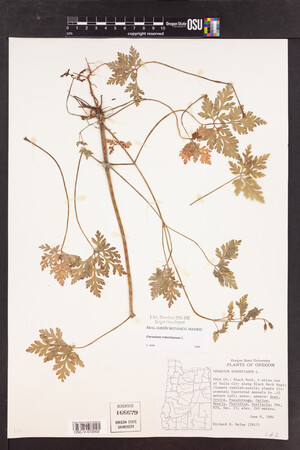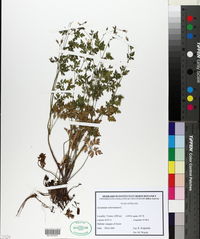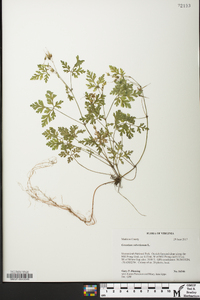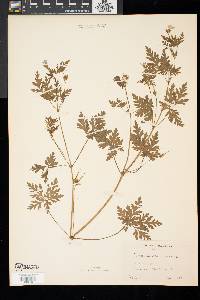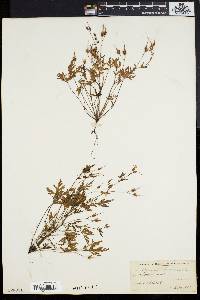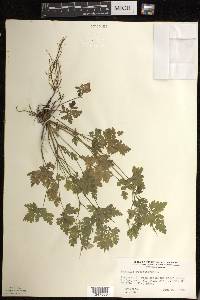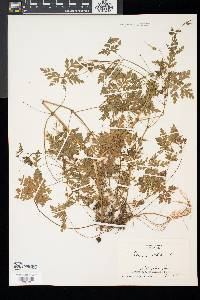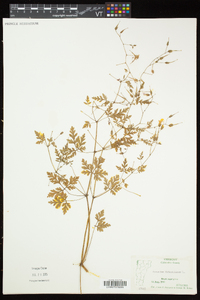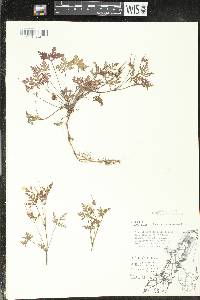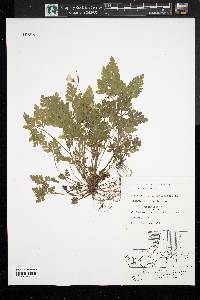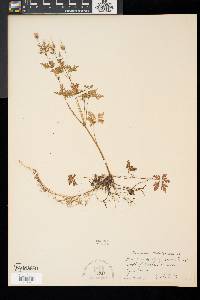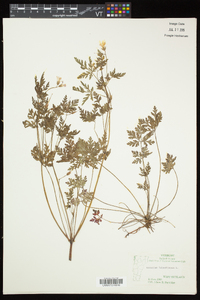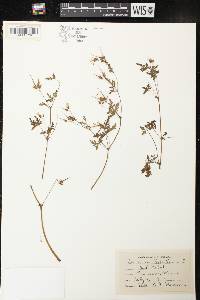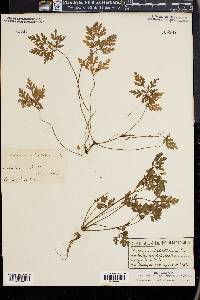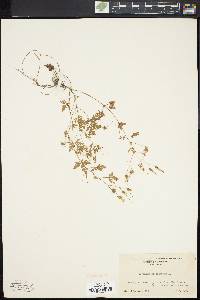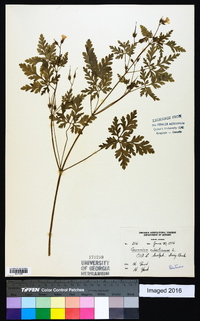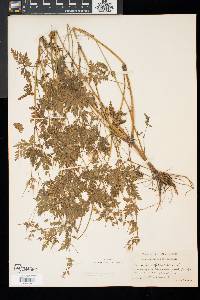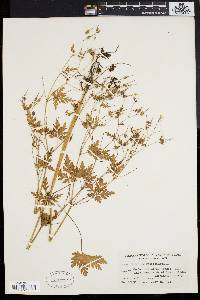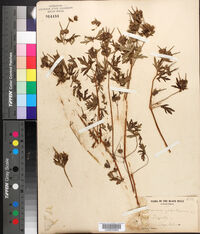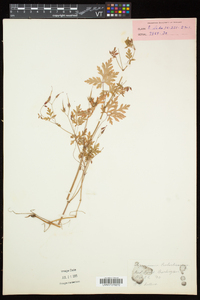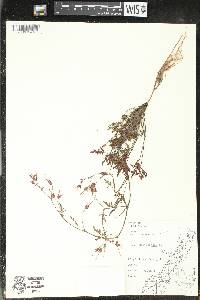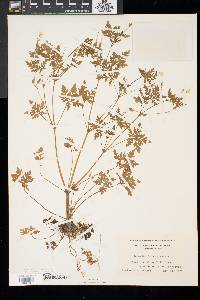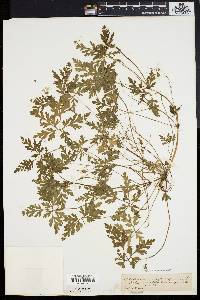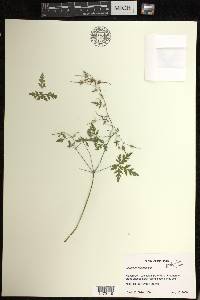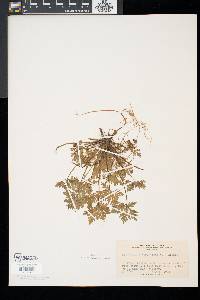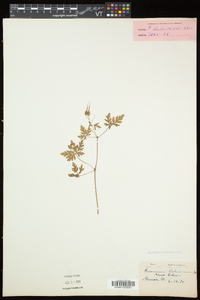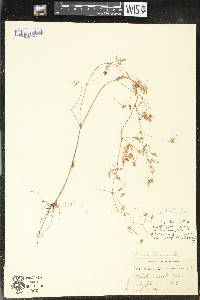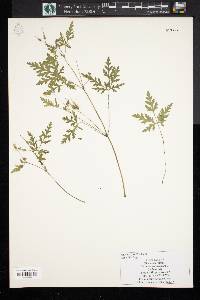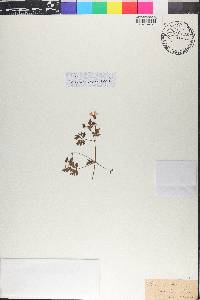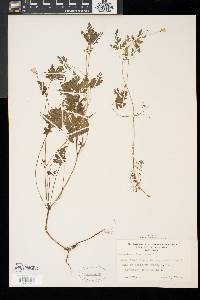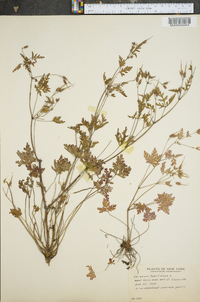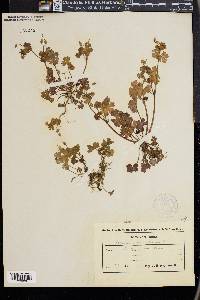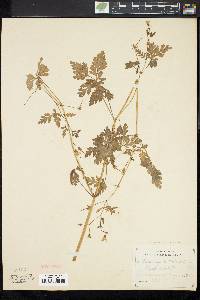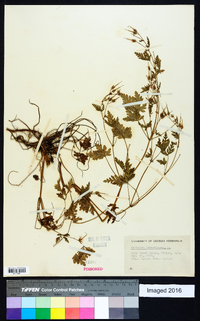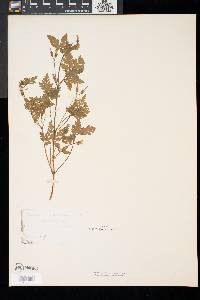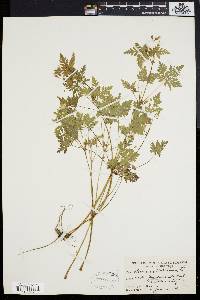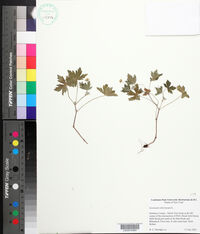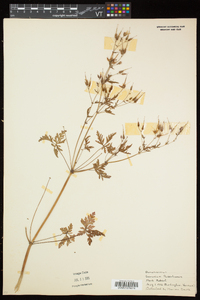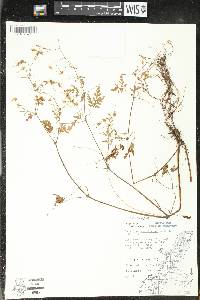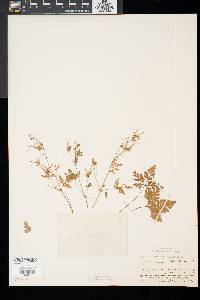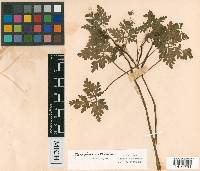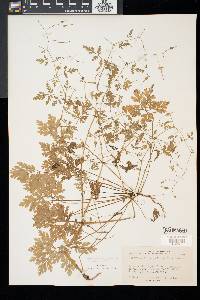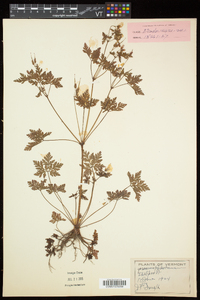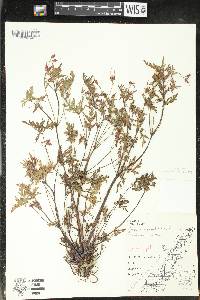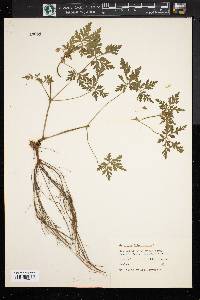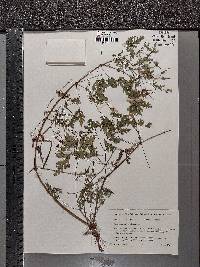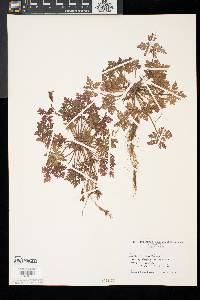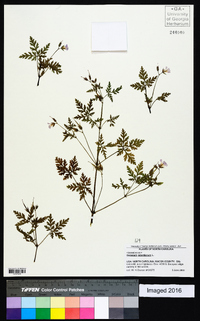Geranium robertianum
|
|
|
|
Family: Geraniaceae
Lesser Herbrobert
|
Annual or biennial herb 10 - 60 cm tall Stem: branched, spreading, softly long-hairy, often maroon-red. Leaves: opposite, obviously stalked, hairy, 3 - 8 cm wide, broadly deltoid in outline but palmately divided into three to five leaflets. Flowers: bright purple-pink, short-stalked, 1.5 - 3 cm diameter, radially symmetric, and in pairs atop long, hairy, axillary stalks from most of the upper stem leaves. The two flower stalks at the tip of each main stalk elongate as the flowers mature, and these stalks are closely subtended by very small bracts, and further the stalks are covered with a mixture of long, glandular hairs and downward-pointing, non-glandular hairs. Sepals: five, erect and tightly closed around ovary or fruit, green, stiffly straight-hairy, 0.7 - 0.9 cm long, lance-shaped with tip narrowed to a stiff bristle. Petals: five, erect then spreading beyond middle, bright purplish pink, 0.9 - 1.5 cm long, obviously longer than sepals. The base of the petals are abruptly narrowed and mostly covered by the erect sepals before the upper, wider part of the petals flare outwards. Stamens: ten in two series, all fertile, with filaments widened at base, and up to 1 mm long anthers with orange pollen. The ring of five longer stamens are aligned with the petals, while the five shorter stamens are alternate with the petals. Pistil: with a single, deeply five-lobed, superior ovary; one elongated style column; and five linear stigmas. Fruit: five, erect, hairless, wrinkled, single-seeded, rounded base, nutlike segments per flower, each with a short terminal beak and two elongate extensions, which resemble a bird's long beak. Unlike other species, the individual nutlike parts surrounding the remnant elongated style column break away from their apical beak and only remain attached to the style column by the two special elongate extensions before entirely separating from the style column. Thus, the seed is not ejected, rather each entire nutlike segment is dispersed with its enclosed seed. Leaflets: three to five per leaf, at least terminal leaflet short-stalked, all deeply pinnately lobed or divided, and with a pointed tip. Similar species: Geranium robertianum may be somewhat similar to other species in our area, but it is the only species with compound leaves, wrinkled fruit with two long beak-like attachments, and seeds retained inside the nutlike fruit segments which are dispersed together. Our two other larger flowered species, with petals over 1 cm long, G. maculatum and G. sanguineum differ since they are both perennials with stout rhizomes. In addition, the flowers of G. maculatum are clustered on a long stalk and not paired, while in G. sanguineum the flowers are arranged singly on the stalks and the petals have notched tips. Flowering: late May to late September Habitat and ecology: Rare in the Chicago Region, except possibly in Berrien County, Michigan where it is found in maple-beech woods. This species typically prefers rich deciduous woods and calcareous soils. Occurence in the Chicago region: native Notes: Geranium robertianum has some unique characters compared to other members of the genus. These include the following: 1) the five sections of the fruit do not dipserse the seed, but break apart as a unit from the style column; 2) the nutlike fruit parts differ by being wrinkled and having two long beak-like extensions; and 3) the petals only spread for part of their length with the erect basal portion greatly narrowed into long extensions. These differences have sometimes been used to separate this species into its own genus, Robertiella. This is a plant that is found in northern regions around the globe (circumboreal species) and it is uncertain whether it is native to our area or just a naturalized introduction. The plant has a strong, unpleasant earthy smell, which is very evident upon drying. Author: The Field Museum Jepson 1993, Kearney and Peebles 1969 Duration: Annual Nativity: Non-Native Lifeform: Forb/Herb General: Generally erect annual 10-70 cm; hairs dense, short, spreading or reflexed. Leaves: Blade 2.5-8.5 cm wide, divided to base with 5-7 segments, oblong to wedge-shaped, upper half of segments lobed. Flowers: Clustered atop stem, on pedicel 2-7 mm long; sepals 4-7 mm, short-awned; petals more or less equal to sepals, notched, white to rose pink. Fruits: Mericarp 3-4.5 mm, dense hairs, 0.5-1.8 mm, beak 15-19 mm long, narrowing to a tip 1-2 mm; stigmas 0.7-1.4 mm. Ecology: Found in open to shaded sites from 3,000-5,500 ft (914-1676 m); flowers April-May. Notes: Told apart from the other species of Geranium by its slender taproot, and the petals scarcely or not surpassing the sepals. Ethnobotany: Unknown, but other species in the genera have uses. Etymology: Geranium is from the Greek geranos, crane, for the beak-like fruit, while carolinianum means of or from Carolina. Synonyms: Geranium carolinianum, Geranium eriophorum Editor: SBuckley, 2010 Weak annual or biennial with branched, spreading, villous or villosulous stems to 6 dm; lvs 3-5-cleft to the base, at least the terminal segment evidently petiolulate, all segments pinnately lobed or cleft; peduncles from most of the upper nodes, mostly 2-fld; sep 7-9 mm, shortly aristate, erect at anthesis; pet 9-13 mm, bright pink or red-purple, entire, long- clawed; carpel-bodies (unlike our other spp.), disarticulating from the beak but tending to remain attached for some time to the stylar column by a pair of elongate, subapical filaments, the proper beak separating from the stylar column ±as in other spp.; 2n=32, 64. Damp rich woods; widespread in the Old World (esp. Eurasia) and widely naturalized in our range. May-Sept. (Robertiella r.) Gleason, Henry A. & Cronquist, Arthur J. 1991. Manual of vascular plants of northeastern United States and adjacent Canada. lxxv + 910 pp. ©The New York Botanical Garden. All rights reserved. Used by permission. From Flora of Indiana (1940) by Charles C. Deam I found this species to be abundant in a very low woods of 20 acres in St. Joseph County, associated with white elm and soft maple. It was reported by Collins from Dearborn County but he left no specimen. I doubt the accuracy of the determination. ...... Indiana Coefficient of Conservatism: C = 4 Wetland Indicator Status: FACU |
|
|
|

